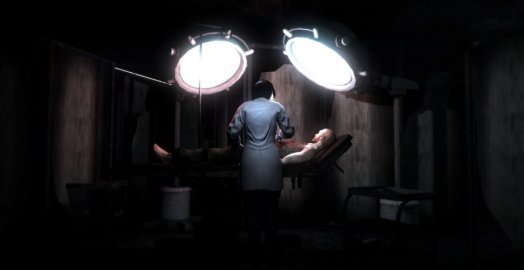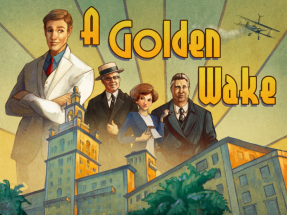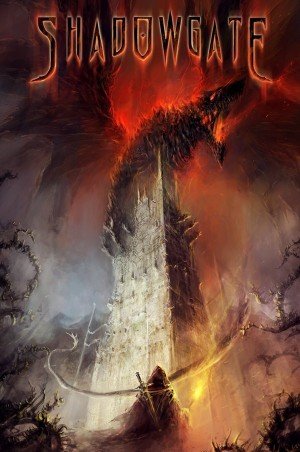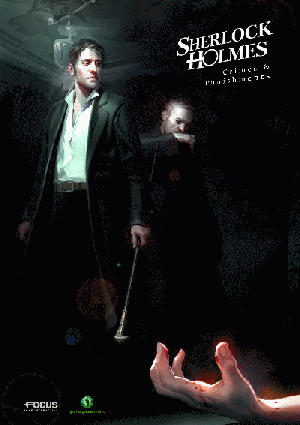Review for Doorways: The Underworld

Although its numeric denomination has been removed from this installment, Doorways: The Underworld is really the third “chapter” of a four-part horror series. If you didn’t know that going in, you’d have very little idea of what is going on or why – not that returning players have much more insight into this intentionally vague and frustratingly bewildering paranormal series. The sequel’s bigger sin, however, is that it seems to have removed the bits that actually worked in its underwhelming two-pronged predecessor. The first two combined chapters had the benefit of being something new – the beginning of a series that, even with its lack of diverse gameplay, was determined to tell its story a certain way, however confusing that way might have been. This time around, I just feel disappointed that the story does nothing to further the overall narrative arc, while the already limited gameplay elements have become even more tedious with maze after maze of enemy-stalked hallways.
Even though the move to a standalone-sounding title would seem to indicate that the game is separate from the first two chapters, The Underworld is indeed a continuation of the same story. You are private investigator Thomas Foster, who is tasked with seeking out another killer, this time a crazed neurosurgeon responsible for a handful of deaths and disappearances. Once again, however, it’s never clear how this is actually occurring. Random notes left around (yet apparently written by Foster himself) indicate that he’s psychically inside the mind of the killer – or rather, that the killer has been let inside his – but how that is possible is never explained. Nor is the goal, really. You’re not really trying to solve the mystery or catch the killer, but merely to recreate the sadistic details for reasons unknown.
The game is stitched together from a small number of slightly differing environments that offer only a small variation in visual style. Doorways, as a series, seems to imply that the human mind is cavernous and full of empty corridors. From an underground bunker to partly-flooded tunnels to a dingy, cement medical facility/prison, everywhere you turn – and turn, and turn some more – is another hallway to be explored. And it’s all very dark. Several times you’re limited solely to the limited beam of your flashlight, or to an ethereal glow of a psychic flashback that pierces the pitch blackness. It’s effectively creepy, particular as there are monsters continually roaming the dark, but it’s relentlessly bleak and loses much of its suspenseful impact over time and simply becomes annoying.
The Underworld’s technical performance is solid, as most Unity-based games these days handle a wide range of specifications and requirements. The game is once again in first-person, real-time 3D using WASD or gamepad controls. Camera panning feels responsive with the mouse, and movement speed is quick-paced but easily controlled. You also have the ability to jump, sprint, and crouch, though none are required particularly often (though running for your life may happen more often if you’re unlucky). One new addition is Oculus Rift support, but I can’t comment on that as I don’t have the required Virtual Reality hardware. Other typical settings like keyboard mapping, volume levels, and voice-over controls are available.
But don’t disable those voice-overs! One consistent strength in this series continues to be the voice acting, on the infrequent occasions when Thomas narrates his own journal entries. While a bit hammy, the delivery doesn’t feel awkward or contrived. Sam Mowry returns as the protagonist and does a fine job, adding a B-movie appeal to the audio presentation. In fact, the sound design overall is an improvement this time around. The ambient soundscape works better as a whole: the clanking of chains and pounding of footsteps echo nicely in the long hallways. The music tracks are suitably ambient and industrial, with minimal instrumentation.
The visual production lags behind, however. The graphics are crisper this time around, but the textures are often muddy enough that even the perpetual darkness can’t hide it. There are some interesting touches to the lighting, as different color filters envelop each area accordingly. There is an option to add grain to the visual presentation, for those that enjoy the look. I chose to play without it, as much because visibility was already an issue for me. The settings themselves feel uninspired as well, as the same ones continue to pop up regularly in horror games, and have long since stopped eliciting the unique tension they once did. Barring one encountered later in the game, creature design was similarly lacklustre, from a lumbering behemoth to a limbless monster on mechanical wheels. Any real tension they originally inspire largely dissipates after seeing them up close – unless they get too close, but that’s a tension of a whole different kind.
The real failing of The Underworld, however, is its tedious gameplay, as the lack of diversity left me with a familiar sense of strict linearity. I found myself bored with the 'rinse-repeat' process of collecting expository notes and finding a key, button, or code to move on. While these notes are well-written, they are inconveniently hidden amidst half-baked mazes patrolled by deadly creatures. You can evade these enemies (one key opponent per setting), but it’s repetitive and laborious, forcing you to constantly be on guard for the next sudden encounter. If you die, at least you re-spawn close by with no lasting repercussions. I'll admit, I died a lot – even early on I was constantly fighting with the monster patterns and the confusing level structure. There’s no way to fight or distract the creatures, so your only option is to hide or run like hell, and these chase segments felt either deliberately frustrating or poorly designed. The final “boss” sequence was one of the most intensely frustrating gaming experiences I've had in a long time, set in a seemingly endless series of confusing timed mazes to boot.
One of the additions to this game that did offer something different from the first two chapters was the introduction of some light platforming. Though very infrequent, it did help break up the monotony of the other segments. A more prevalent addition is the flashback system, a sort-of time-shift puzzle mechanic that helped add a bit of variety to the experience, transforming the current scene into one from the past and revealing details – some welcome, some decidedly unpleasant – that couldn’t be seen otherwise. These are the exceptions to the rule, however, and it's unfortunate that even in a game this short the level design is so uninspired, because it's a series very much in need of unique flavor.
Part of the problem is that Doorways fails to capitalize on its own premise. Though clichéd, the ability to dive into the mind of serial killer opens itself wide to surreal opportunities, with strange creatures manifested from subconscious fears, a level design that emphasizes the complex nature of the mind, and an unsolved serial murder case to investigate and puzzle through. But there’s no intrigue left when all the details are spelled out in notes or short cutscenes. Mystery is gone when you start out with a case file specifically detailing the suspect’s crimes. Instead, as the game progresses the story seems purposely irrelevant, as if you are just exploring a haunted house, without any real focus or purpose. Doorways is less about a journey through the mind of a serial killer and more about navigating a padded-out set of levels.
If the main goal of the series has become simply to embrace the horror and abandon the investigative pretense, that would be fine, but The Underworld doesn’t succeed there either, ultimately failing to ramp up any sustained fear factor. Increasingly complex mazes patrolled by deadly but dumb enemies aren’t scary, just more and more frustrating, culminating in one of the worst endgame sequences I’ve had the misfortune to experience. It was terrifying the first time or two I died; the only thing that frightened me after that was the thought of having to keep replaying it until I found my way out.
Despite a playtime of only a couple hours, the task of actually playing the game proved an intense struggle because the gameplay gets in the way of maintaining atmospheric tension, rather than enhancing it. The linear progression; the repetitive attempts to create artificial tension, the lack of any relevant story focus, and the uninspired settings all combined to bog down the final result in The Underworld. I had many concerns in my first review of the series, and I hoped this third chapter would improve on a lot of the negative aspects. While the introduction of the flashback mechanic was a welcome new element, even that was under-utilized in favor of the same old tedium. If you enjoy trying to survive against things that go bump in the night, you’ll have plenty of chances here. But for everyone else, after three of four planned episodes, it’s certainly starting to look like these Doorways are leading nowhere fast.
WHERE CAN I DOWNLOAD Doorways: The Underworld
Doorways: The Underworld is available at:
We get a small commission from any game you buy through these links (except Steam).Our Verdict:
With three chapters down and one to go, the Doorways series still lacks the kind of compelling story or gameplay needed for a successful horror game.





























